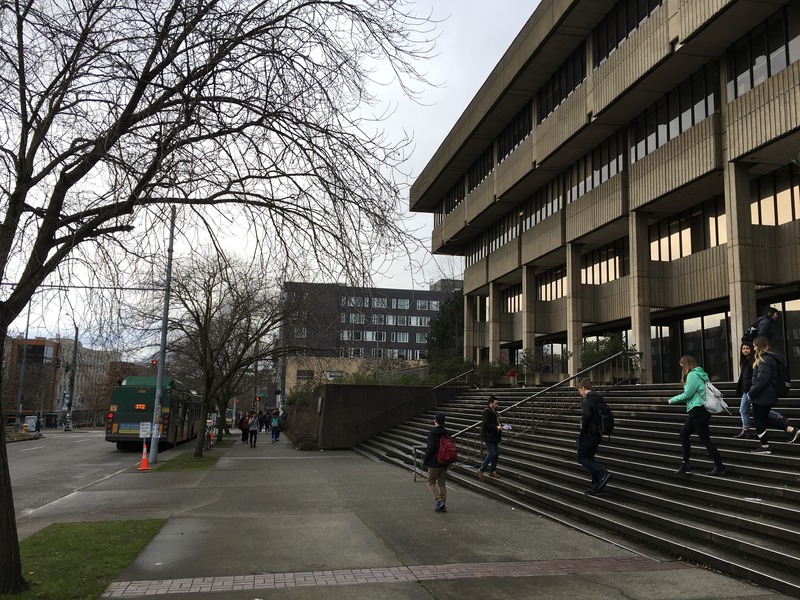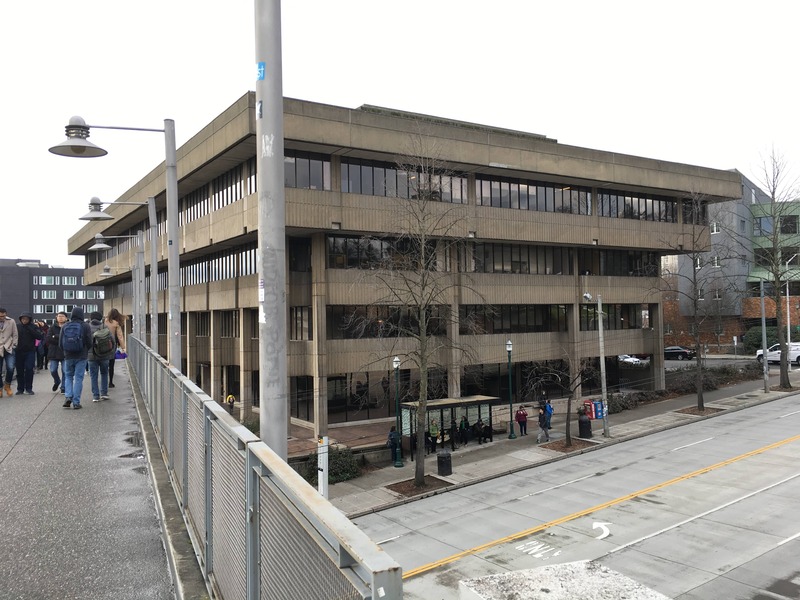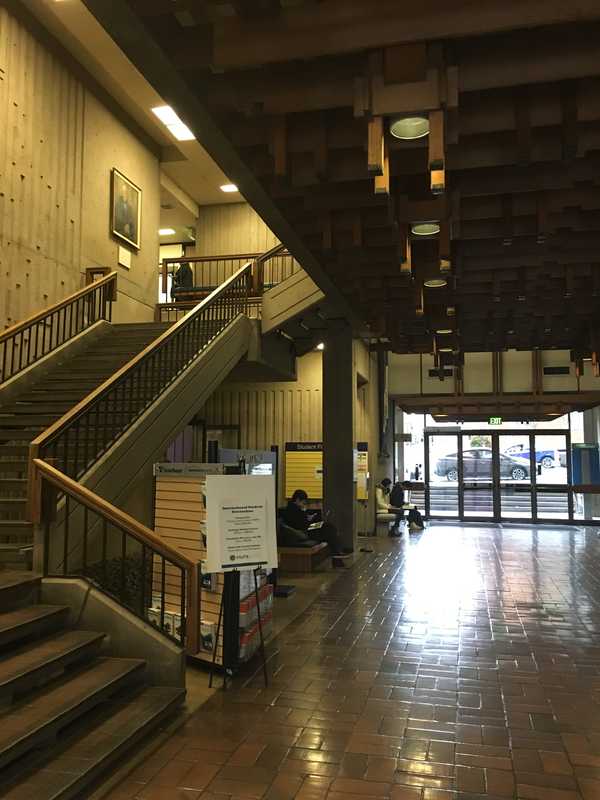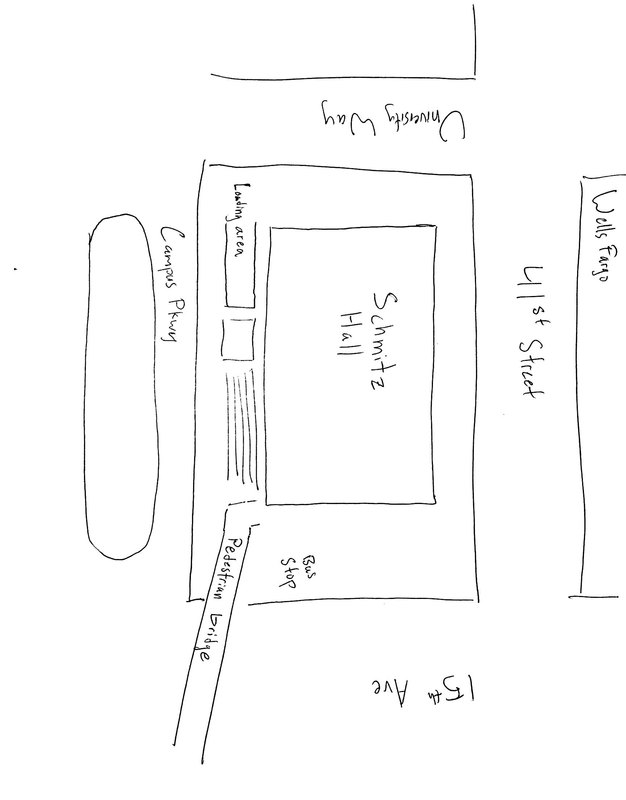Site Report 1

A view from the south side of the block, facing west. During the day, this area is often filled with UW students traveling from the west campus dorms to school. Photograph by author, 01/19/17.

A sculpture on the pedestrian bridge over 15th Avenue. Photograph by author, 01/19/17.

A view of Schmitz Hall from the pedestrian bridge. Photograph by author, 01/19/17.

The interior of Schmitz Hall (first floor). This building houses several of the university's administrative departments. Photograph by author, 01/19/17.

A handdrawn diagram of the layout of block 29. Drawing by author, 01/19/17.
The block enclosed by University Way, 15th Avenue, 41st Street, and Campus Parkway is fairly minimal in both feel and content. It has only one building on its premises: Schmitz Hall. This building is part of the University of Washington campus, home to many undergraduate student services. It appears to be made almost entirely of harsh concrete.
From the east side, pedestrians can cross to this block via a pedestrian bridge that passes over 15th Avenue. During my visit, this bridge was constantly being used by several pedestrians. The east side of the block also has a bus stop with service to downtown Seattle and several other areas. The west side of the block features what is presumably an underground loading area for the Schmitz Hall. The southern side is a fairly open area that faces many of the student dorms. University Way to the west sports a dedicated bike lane for cyclists.
Alongside the sidewalk, there are several maintained areas for vegetation; these areas seem to be decently taken care of. Telephone poles and streetlamps are covered entirely with a diverse display of fliers and postings. There are people everywhere, a large portion of which are mostly likely students that live in the west campus UW dorms. The sounds of traffic are the most obvious, but there are also many conversations to overhear as people pass you by. There is no noticeable smell in the air.
Some questions come to mind. When was this property acquired by the university, and for what initial purpose? Was this area the same area that students originally lived in during the early days of the university? When was the building (Schmitz Hall) built and what aspects of the time influenced its structural and aesthetic design? Although the block does seem fairly complete (it feels very modular), I wonder if there is a reason it does not have more decoration or even more color. The entire block is extremely simple amid a vibrant college life; perhaps there are city or university codes that the exterior must adhere to. Alternatively, perhaps the reason for this is that concrete is very hard to decorate.
